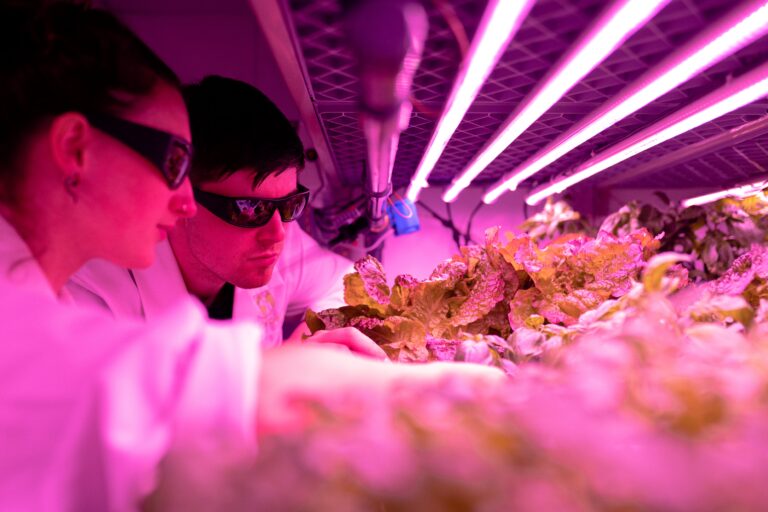Artificial Intelligence in Wildlife Tracking
Protecting ecosystems and wildlife is vital to sustaining the diversity of our ecosystems, protecting natural habitats, and protecting the sustainability of our planet. Monitoring the behavior of animals, their patterns of movement, and the dynamics of populations is crucial to knowing the ecological processes that shape ecosystems and determining conservation efforts. Artificial Intelligence (AI) has recently become an effective tool for tracking wildlife and has revolutionized how scientists gather, analyze, and interpret data about animal movements and behaviors. In this article, we’ll examine the role of AI in tracking wildlife and its benefits, applications, and implications for ecological and conservation research.
AI-Powered Tracking Technologies
Traditional methods for tracking wildlife, like radio telemetry or GPS collars, are less effective in collecting, interpreting, and analyzing data. AI-powered tracking techniques rely on sophisticated sensors, satellite images, machine learning, and algorithms to track animal movements and behavior with unimaginable precision and detail.
For instance, AI algorithms can analyze satellite images to determine and track animals based on their distinctive characteristics, like colors or markings. Additionally, GPS-enabled collars equipped with accelerometers or gyroscopes will record data about animal movements and behaviors, which AI algorithms can use to determine the animal’s behavior and its preferences for habitat or social relationships.
Monitoring Animal Behavior
AI lets researchers monitor the behavior of animals in real time and gain valuable insight into their routines, such as food habits, mating behaviors, and interactions with their surroundings. Machine learning algorithms can analyze sensor data from GPS collars, camera traps, cameras, and Acoustic sensors to identify patterns and irregularities in the behavior of animals.
For example, AI algorithms can analyze the accelerometer data of animal collars to determine their activity level, which includes resting or mating behaviors traps that are fitted with image recognition software, which will determine and classify animals in video or photos, which provide useful information about their behavior as well as the population dynamics.

Tracking Migration Patterns
Migration is an essential element of animal behavior as many species travel on long-distance trips to find places to eat, breeding sites, or suitable habitats. AI lets researchers track migration patterns and understand elements that affect animal movements across diverse ecosystems and landscapes.
For instance, AI algorithms can analyze GPS tracking data to trace migration routes, pinpoint stopover areas, and anticipate the movements of species that migrate, including mammals, birds, and fish. Remote sensing and satellite imagery data can be used to track changes in habitat quality in terms of vegetation cover, habitat quality, and land use patterns along migration corridors, providing insight into the factors that drive the movement of animals and threats to conservation.
Population Dynamics and Conservation
Understanding how populations function is vital for planning and managing conservation because it allows researchers to evaluate the health and viability of wildlife populations and determine conservation priorities and actions. AI assists in analyzing vast-scale data on the abundance and distribution of animals and demographics, allowing researchers to observe population trends and evaluate the efficacy of conservation initiatives.
For example, AI algorithms can analyze camera trap data to calculate populations, track the changes in population over time, and pinpoint species that are in danger of extinction or decline. Like acoustic sensors, bioacoustics monitoring devices can be utilized to track the vocalizations and calls of wild species, revealing insights into their population, distribution, andiron.
Benefits of AI in Wildlife Tracking
The incorporation of AI in tracking wildlife offers many advantages for the conservation of wildlife and research on ecology. This includes:
- Data ability to collect and analyze data.
- Live monitoring of animal movements and behavior.
- Accuracy and precision improved in monitoring migration patterns.
- Information on population dynamics and conservation goals.
- Optimization of conservation intervention and strategies for managing.
What is artificial intelligence (AI) in wildlife tracking, and how does it work?
Artificial intelligence (AI) in wildlife tracking refers to using advanced technologies, such as machine learning algorithms, sensors, and satellite imagery, to monitor animal behavior, migration patterns, and population dynamics. AI-powered tracking systems analyze large volumes of data collected from GPS collars, camera traps, acoustic sensors, and remote sensing platforms to identify patterns, detect anomalies, and extract valuable insights into wildlife movements and behaviors.
What are the main applications of AI in wildlife tracking?
AI has several applications in wildlife tracking, including:
- Monitoring animal behavior in real-time.
- Tracking migration patterns and seasonal movements.
- Assessing population dynamics and demographics.
- Identifying individual animals based on unique features.
- Analyzing habitat use and resource selection.
- Predicting wildlife responses to environmental changes.
- Informing conservation planning and management strategies.
How does AI improve the accuracy and efficiency of wildlife tracking?
AI algorithms enhance the accuracy and efficiency of wildlife tracking by automating data analysis tasks, identifying patterns and trends in large datasets, and extracting valuable insights from complex and heterogeneous data sources. By leveraging machine learning techniques, AI systems can process and interpret data more quickly and accurately than traditional methods, enabling researchers to monitor wildlife populations and behaviors with greater detail and precision.
What are some examples of AI-powered wildlife tracking technologies?
Examples of AI-powered wildlife tracking technologies include:
- GPS collars equipped with accelerometers and gyroscopes to monitor animal movements and behaviors.
- Camera traps with image recognition algorithms to identify and classify animals captured in images or videos.
- Acoustic sensors and bioacoustics monitoring systems are used to monitor the vocalizations and calls of wildlife species.
- Satellite imagery and remote sensing data to map habitat use, vegetation cover, and land use patterns.
- Autonomous drones and aerial vehicles equipped with AI algorithms to survey wildlife populations and habitats from above.
How does AI contribute to wildlife conservation efforts?
AI contributes to wildlife conservation efforts by providing valuable insights into animal behavior, population dynamics, and habitat use, which inform conservation planning and management strategies. By monitoring wildlife populations in real-time and predicting their responses to environmental changes, AI helps researchers identify conservation priorities, mitigate human-wildlife conflicts, and design effective interventions to protect endangered species and preserve biodiversity. Additionally, AI-powered tracking technologies optimize conservation efforts by identifying key habitats, monitoring the effectiveness of protected areas, and assessing the impacts of human activities on wildlife populations.
Conclusion
Artificial intelligence is reinventing tracking wildlife, allowing researchers to observe movement patterns of animals, animal behavior, and population dynamics with incredible precision and clarity. From the monitoring of animals’ moves to the study of huge-scale data on trends in population, AI-powered tracking technology is changing how we study and preserve ecosystems and wildlife.
While we work to develop and improve the application of AI in tracking wildlife and monitoring, we are getting closer to reaching our conservation goals and protecting the ecological integrity and biodiversity that our world has. By harnessing AI’s potential to protect and monitor animals, we can guarantee an ecologically sustainable future for future generations.







